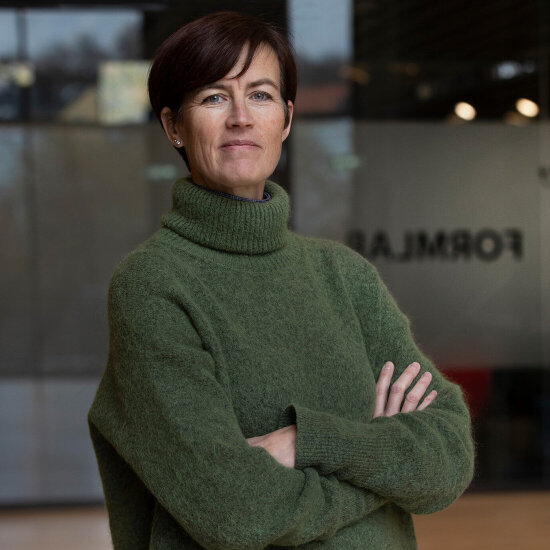Service designers take a holistic view to understand how the user reacts throughout the whole experience of a service from start to finish, in what is called the user or customer “journey”.
By identifying the users’ needs and observing their behaviour, every part of this journey is broken down into touchpoints – which is where the user interacts with the service.
Through tools like insight, mapping, reflection, visualisation and testing the individual parts are then designed to give the best possible overall experience for the user. This combination of creative and system thinking brings new ideas and perspectives that can solve complex challenges and make a long-term impact.
Enhancing customer experience
The users can be customers, employees or users of public services, and the service can be physical or digital products, overall customer service or even spaces. Oslo Airport is an example: wanting to improve their customers’ experience, and in preparation for a big extension, the airport started a massive service design project in 2012 with help from agencies EGGS Design and Sopra Steria. The goal was to improve the experience from when the travellers began their trip, arriving at the airport to take off or landing.
Through observation and interviews, the designers gained insight and developed and tested new solutions along the way from new signage to the training of airport staff. The result is more satisfied customers, and as a bonus, more satisfied employees too.
Because service design takes a holistic view, the process involves other design disciplines as well as other professions. This interdisciplinary method is vital for bringing in new ideas and expertise, and for achieving real innovation.

Photo: Thoms Ekström
Method to beat the competition
According to the recent study Nordic Design Resource, 10 % of Norwegian design professionals work with service or experience design. This might sound like a small group, but they are making a big impact and are currently in high demand. 89 % of service designers in Norway find their clients in private companies, in areas such as retail, service and knowledge industries and product manufacturing, while 9 % work with public sector clients and 2 % in other areas such as with NGOs.
Embraced service design
Today almost 80 % of the total Norwegian work force is employed within the service industry, where the economy is growing fast. Other sectors are also changing, and customers expect a good experience. Over the past 10-20 years, service design has, therefore, become an increasingly important tool for staying competitive. Big companies such as Norwegian telecom giant Telenor, the postal and logistics group Posten, financial companies such as DnB and Gjensidige have all embraced service design to better understand what their customers want.
This development has given Norway many strong design agencies specialising in service and experience design, such as LiveWork, the world’s first service design company, started by Lavrans Løvlie in 2001, as well as Designit, Halogen, Bleed and EGGS Design to name a few. During the last few years, several consultancy companies are also building their own in-house service design teams or merging with design agencies, like PwC who have bought the Norwegian part of LiveWork.
Improving public services
The Norwegian public sector is characterised by a high degree of trust and offers all citizens equal services, funded by a relatively high level of taxation. Since 2010, the government has been especially committed to improving public services and has started using service design as a method to identify and respond to what users genuinely need.
This has already yielded results, for example in the health sector where Oslo University Hospital with the help of Designit cut down the waiting time for diagnosis of breast cancer by 90 %. This project was internationally acknowledged as a great example of public sector innovation by the OECD and has also inspired other areas of the public sector in Norway to test service design as a way to create better, more efficient services.
Since then, the government has launched a new initiative called Stimulab, a programme for innovation and service design, which invites public sector organisations to test service design to solve challenges in new ways. In 2019, 20 million kroner is being handed out to projects that qualify.

Photo: Designit
A cost-effective way
Most recently – and groundbreakingly – the Norwegian government are working with service designers at Halogen to help develop a new white paper on innovation in the public sector, an example of policy design.
According to the international Service Design Network's report on impact in the public sector from 2016, Norway is an advanced user of service design in the public sector. The report claims that service design is a cost-effective way to enhance the impact of public services and that service designers believe their methods can play a major role in solving so-called wicked problems - complex problems that are difficult to solve because they involve many levels of bureaucracy and set ways of working, such as dropout in education, poverty and social exclusion.
Future for service design
As the public and the private sector embrace service design, the Nordic Design Resource study showed that service designers, experience designers and digital designers are currently most in demand among the design disciplines. The challenge we face today, however, is that colleges and universities in Norway can't educate them fast enough.
For more information on insight-driven service design and the innovation challenges facing the service sector in Norway, see Center for Service Innovation, or you can contact the Service Design Network’s Norwegian community.
Also, make sure you watch this film from Service Design Network showcasing work by leading Nordic service designers.

